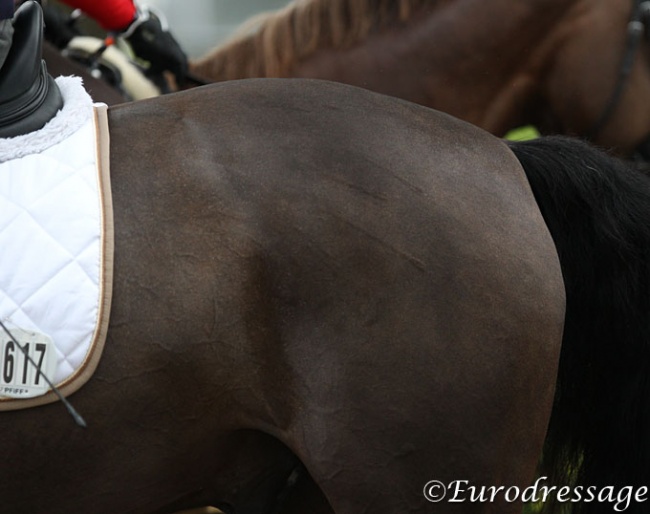
At the 2017 Annual ISES Conference a pilot study conducted by three researchers from universities in the U.S.A. and Italy led by Angelo Telatin was presented on whip use changes. They questioned whether these changes, which were made to improve equine welfare, have unintentional consequences.
New industry rules intended to improve horse welfare focusing on decreasing whipping frequency may actually go against the principles of operant training, specifically negative reinforcement. This may lead to ineffective training results and/or the occurrence of aversive behaviours. This pilot study emphasised the need to ensure that rules are objective and evidence-based.
The Study
In equine training, the whip is considered an artificial aid used to communicate with the animal. Within the industry, it is common practice to either use the whip with a single stroke or two or three strokes separated by a few seconds. Furthermore, limiting the number or pressure of whip strokes on horses during competition has been at the centre of several rule changes across the world.
For example, the Fédération Equestre Internationale states that a horse should never be hit more than three times in a row. However, this rule focuses on quantity rather than frequency of strikes to improve horse welfare. Are there potential negative repercussions to the horse as a result of these well-intended rule changes?
When using negative reinforcement in training, the effectiveness of the outcome depends on the ability of the reward/release of pressure to occur contiguously with the performance of the desired behaviour. If the release is too soon, it could signal a reward for an undesirable behaviour.
Therefore, a pilot study was initiated to determine if the frequency of whip strikes might have a negative impact on the training and welfare of the horse due to contradictory messages relative to operant behavioural responses.
The Findings
Nine horses were fitted with a halter and driving blinders and tapped with a whip on their hindquarters lightly and consistently. Three tapping treatments were administered with a frequency of 3 seconds, 1.5 seconds or under a second between taps, respectively, once per day. The behaviour selected to be reinforced was to move the hindquarters towards the whip. This behaviour was selected since normal training would never reinforce this type of response, so the likelihood that horses already knew the desired task was very low.
During the shaping sequence, the first approximated response was reinforced by ceasing the tapping, and a new shaping sequence was started after 5 seconds. Horses performed significantly better when the tapping was at a rate of less than a second between taps. Any frequency of a single stroke or above a second has the potential to reinforce an unwanted behaviour or to create a new aversive behaviour that could disrupt the training sequence.
Finally when a horse fails to offer the proper response to the request of the whip, riders may increase the force rather than the frequency of the strike which could negatively impact the horse’s welfare.
Source: ISES - Photo © Astrid Appels
Related Links
Whipping of Race Horses is Influenced by Jockey's Experience
Helsinki Humane Society HESY Ry Asks Horse Industry to Abandon Violent Training Methods
Two Lords Dominate 2011 Rhinelander Pony Talent Search in Hunxe
Whip Lash: Schmidt and Withages on Schmidt's Disqualification